深度学习笔记之循环神经网络(九)GRU的反向传播过程
深度学习笔记之循环神经网络——GRU的反向传播过程
引言
上一节介绍了门控循环单元 ( Gate Recurrent Unit,GRU ) (\text{Gate Recurrent Unit,GRU}) (Gate Recurrent Unit,GRU),本节我们参照 LSTM \text{LSTM} LSTM反向传播的格式,观察 GRU \text{GRU} GRU的反向传播过程。
回顾: GRU \text{GRU} GRU的前馈计算过程

GRU \text{GRU} GRU的前馈计算过程表示如下:
为了后续的反向传播过程,将过程分解的细致一些。其中 Z ~ ( t ) , r ~ ( t ) \widetilde{\mathcal Z}^{(t)},\widetilde{r}^{(t)} Z (t),r (t)分别表示更新门、重置门的线性计算过程。
{ Z ~ ( t ) = W H ⇒ Z ⋅ h ( t − 1 ) + W X ⇒ Z ⋅ x ( t ) + b Z Z ( t ) = σ ( Z ~ ( t ) ) r ~ ( t ) = W H ⇒ r ⋅ h ( t − 1 ) + W X ⇒ r ⋅ x ( t ) + b r r ( t ) = σ ( r ~ ( t ) ) h ~ ( t ) = Tanh [ W H ⇒ H ~ ⋅ ( r ( t ) ∗ h ( t − 1 ) ) + W X ⇒ H ~ ⋅ x ( t ) + b H ~ ] h ( t ) = ( 1 − Z ( t ) ) ∗ h ( t − 1 ) + Z ( t ) ∗ h ~ ( t ) \begin{cases} \begin{aligned} & \widetilde{\mathcal Z}^{(t)} = \mathcal W_{\mathcal H \Rightarrow \mathcal Z} \cdot h^{(t-1)} + \mathcal W_{\mathcal X \Rightarrow \mathcal Z} \cdot x^{(t)} + b_{\mathcal Z} \\ & \mathcal Z^{(t)} = \sigma(\widetilde{\mathcal Z}^{(t)}) \\ & \widetilde{r}^{(t)} = \mathcal W_{\mathcal H \Rightarrow r} \cdot h^{(t-1)} + \mathcal W_{\mathcal X \Rightarrow r} \cdot x^{(t)} + b_{r} \\ & r^{(t)} = \sigma(\widetilde{r}^{(t)}) \\ & \widetilde{h}^{(t)} = \text{Tanh} \left[\mathcal W_{\mathcal H \Rightarrow \widetilde{\mathcal H}} \cdot (r^{(t)} * h^{(t-1)}) + \mathcal W_{\mathcal X \Rightarrow \widetilde{\mathcal H}} \cdot x^{(t)} + b_{\widetilde{\mathcal H}}\right] \\ & h^{(t)} = (1 -\mathcal Z^{(t)}) * h^{(t-1)} + \mathcal Z^{(t)} * \widetilde{h}^{(t)} \end{aligned} \end{cases} ⎩ ⎨ ⎧Z (t)=WH⇒Z⋅h(t−1)+WX⇒Z⋅x(t)+bZZ(t)=σ(Z (t))r (t)=WH⇒r⋅h(t−1)+WX⇒r⋅x(t)+brr(t)=σ(r (t))h (t)=Tanh[WH⇒H ⋅(r(t)∗h(t−1))+WX⇒H ⋅x(t)+bH ]h(t)=(1−Z(t))∗h(t−1)+Z(t)∗h (t)
场景设计
上述仅描述的是 GRU \text{GRU} GRU关于序列信息 h ( t ) ( t = 1 , 2 , ⋯ , T ) h^{(t)}(t=1,2,\cdots,\mathcal T) h(t)(t=1,2,⋯,T)的迭代过程。各时刻的输出特征以及损失函数于循环神经网络相同:
- 使用 Softmax \text{Softmax} Softmax激活函数,其输出结果作为模型对 t t t时刻的预测结果:
{ C ( t ) = W H ⇒ C ⋅ h ( t ) + b h y ^ ( t ) = Softmax ( C ( t ) ) \begin{cases} \mathcal C^{(t)} = \mathcal W_{\mathcal H \Rightarrow \mathcal C} \cdot h^{(t)} + b_{h} \\ \hat y^{(t)} = \text{Softmax}(\mathcal C^{(t)}) \end{cases} {C(t)=WH⇒C⋅h(t)+bhy^(t)=Softmax(C(t)) - 关于 t t t时刻预测结果 y ^ ( t ) \hat y^{(t)} y^(t)与真实分布 y ( t ) y^{(t)} y(t)之间的偏差信息使用交叉熵 ( CrossEntropy ) (\text{CrossEntropy}) (CrossEntropy)进行表示:
其中n Y n_{\mathcal Y} nY表示预测/真实分布的维数。
L ( t ) = L [ y ^ ( t ) , y ( t ) ] = − ∑ j = 1 n Y y j ( t ) log [ y ^ j ( t ) ] \mathcal L^{(t)} = \mathcal L \left[\hat y^{(t)},y^{(t)}\right] = - \sum_{j=1}^{n_\mathcal Y} y_j^{(t)} \log \left[\hat y_j^{(t)}\right] L(t)=L[y^(t),y(t)]=−j=1∑nYyj(t)log[y^j(t)] - 所有时刻交叉熵结果的累加和构成完整的损失函数 L \mathcal L L:
L = ∑ t = 1 T L ( t ) = ∑ t = 1 T L [ y ^ ( t ) , y ( t ) ] \begin{aligned} \mathcal L & = \sum_{t=1}^{\mathcal T} \mathcal L^{(t)}\\ & = \sum_{t=1}^{\mathcal T} \mathcal L \left[\hat y^{(t)},y^{(t)}\right] \end{aligned} L=t=1∑TL(t)=t=1∑TL[y^(t),y(t)]
反向传播过程
T \mathcal T T时刻的反向传播过程
以 T \mathcal T T时刻重置门 ∂ L ∂ W h ( T ) ⇒ Z ( T ) \begin{aligned}\frac{\partial \mathcal L}{\partial \mathcal W_{\mathcal h^{(\mathcal T)} \Rightarrow \mathcal Z^{(\mathcal T)}}}\end{aligned} ∂Wh(T)⇒Z(T)∂L的反向传播为例:
- 计算梯度 ∂ L ∂ L ( T ) \begin{aligned}\frac{\partial \mathcal L}{\partial \mathcal L^{(\mathcal T)}}\end{aligned} ∂L(T)∂L:
其中仅有L ( T ) \mathcal L^{(\mathcal T)} L(T)一项存在梯度,其余项均视作常数。
∂ L ∂ L ( T ) = ∂ ∂ L ( T ) [ ∑ t = 1 T L ( t ) ] = 0 + 0 + ⋯ + 1 = 1 \frac{\partial \mathcal L}{\partial \mathcal L^{(\mathcal T)}} = \frac{\partial}{\partial \mathcal L^{(\mathcal T)}} \left[\sum_{t=1}^{\mathcal T} \mathcal L^{(t)}\right] = 0 + 0 + \cdots + 1 = 1 ∂L(T)∂L=∂L(T)∂[t=1∑TL(t)]=0+0+⋯+1=1 - 计算梯度 ∂ L ( T ) ∂ C ( T ) \begin{aligned}\frac{\partial \mathcal L^{(\mathcal T)}}{\partial \mathcal C^{(\mathcal T)}}\end{aligned} ∂C(T)∂L(T):
关于Softmax \text{Softmax} Softmax激活函数与交叉熵组合的梯度描述,见循环神经网络—— Softmax \text{Softmax} Softmax函数的反向传播过程一节,这里不再赘述。
{ L ( T ) = − ∑ j = 1 n Y y j ( T ) log [ y ^ j ( T ) ] y ^ ( T ) = Softmax [ C ( T ) ] ⇒ ∂ L ( T ) ∂ C ( T ) = y ^ ( T ) − y ( T ) \begin{aligned} & \begin{cases} \mathcal L^{(\mathcal T)} = -\sum_{j=1}^{n_{\mathcal Y}}y_j^{(\mathcal T)} \log \left[\hat y_j^{(\mathcal T)}\right] \\ \hat y^{(\mathcal T)} = \text{Softmax}[\mathcal C^{(\mathcal T)}] \end{cases} \\ & \Rightarrow \frac{\partial \mathcal L^{(\mathcal T)}}{\partial \mathcal C^{(\mathcal T)}} = \hat y^{(\mathcal T)} - y^{(\mathcal T)} \end{aligned} {L(T)=−∑j=1nYyj(T)log[y^j(T)]y^(T)=Softmax[C(T)]⇒∂C(T)∂L(T)=y^(T)−y(T) - 继续计算梯度 ∂ C ( T ) ∂ h ( T ) \begin{aligned}\frac{\partial \mathcal C^{(\mathcal T)}}{\partial h^{(\mathcal T)}}\end{aligned} ∂h(T)∂C(T):
∂ C ( T ) ∂ h ( T ) = ∂ ∂ h ( T ) [ W H ⇒ C ⋅ h ( T ) + b h ] = W H ⇒ C \frac{\partial \mathcal C^{(\mathcal T)}}{\partial h^{(\mathcal T)}} = \frac{\partial}{\partial h^{(\mathcal T)}} \left[\mathcal W_{\mathcal H \Rightarrow \mathcal C} \cdot h^{(\mathcal T)} + b_{h}\right] = \mathcal W_{\mathcal H \Rightarrow \mathcal C} ∂h(T)∂C(T)=∂h(T)∂[WH⇒C⋅h(T)+bh]=WH⇒C
至此,关于梯度 ∂ L ∂ h ( T ) \begin{aligned}\frac{\partial \mathcal L}{\partial h^{(\mathcal T)}}\end{aligned} ∂h(T)∂L可表示为:
∂ L ∂ h ( T ) = ∂ L ∂ L ( T ) ⋅ ∂ L ( T ) ∂ C ( T ) ⋅ ∂ C ( T ) ∂ h ( T ) = 1 ⋅ [ W H ⇒ C ] T ⋅ ( y ^ ( T ) − y ( T ) ) \begin{aligned} \frac{\partial \mathcal L}{\partial h^{(\mathcal T)}} & = \frac{\partial \mathcal L}{\partial \mathcal L^{(\mathcal T)}} \cdot \frac{\partial \mathcal L^{(\mathcal T)}}{\partial \mathcal C^{(\mathcal T)}} \cdot \frac{\partial \mathcal C^{(\mathcal T)}}{\partial h^{(\mathcal T)}} \\ & = 1 \cdot \left[\mathcal W_{\mathcal H \Rightarrow \mathcal C}\right]^T \cdot (\hat y^{(\mathcal T)} - y^{(\mathcal T)}) \end{aligned} ∂h(T)∂L=∂L(T)∂L⋅∂C(T)∂L(T)⋅∂h(T)∂C(T)=1⋅[WH⇒C]T⋅(y^(T)−y(T))
观察:从 h ( T ) h^{(\mathcal T)} h(T)开始,从 h ( T ) ⇒ W h ( T ) ⇒ Z ( T ) h^{(\mathcal T)} \Rightarrow \mathcal W_{h^{(\mathcal T)} \Rightarrow \mathcal Z^{(\mathcal T)}} h(T)⇒Wh(T)⇒Z(T)的传播路径都有哪些。
只有唯一一条,其前馈计算路径表示为:
{ h ( t ) = ( 1 − Z ( t ) ) ∗ h ( t − 1 ) + Z ( t ) ∗ h ~ ( t ) Z ( t ) = σ ( Z ~ ( t ) ) Z ~ ( t ) = W H ⇒ Z ⋅ h ( t − 1 ) + W X ⇒ Z ⋅ x ( t ) + b Z \begin{cases} \begin{aligned} & h^{(t)} = (1 -\mathcal Z^{(t)}) * h^{(t-1)} + \mathcal Z^{(t)} * \widetilde{h}^{(t)} \\ & \mathcal Z^{(t)} = \sigma(\widetilde{\mathcal Z}^{(t)}) \\ & \widetilde{\mathcal Z}^{(t)} = \mathcal W_{\mathcal H \Rightarrow \mathcal Z} \cdot h^{(t-1)} + \mathcal W_{\mathcal X \Rightarrow \mathcal Z} \cdot x^{(t)} + b_{\mathcal Z} \end{aligned} \end{cases} ⎩ ⎨ ⎧h(t)=(1−Z(t))∗h(t−1)+Z(t)∗h (t)Z(t)=σ(Z (t))Z (t)=WH⇒Z⋅h(t−1)+WX⇒Z⋅x(t)+bZ
对应反向传播结果表示为:
∂ h ( T ) ∂ W h ( T ) ⇒ Z ( T ) = ∂ h ( T ) ∂ Z ( T ) ⋅ ∂ Z ( T ) ∂ Z ~ ( T ) ⋅ ∂ Z ~ ( T ) ∂ W h ( T ) ⇒ Z ( T ) = [ h ~ ( T ) − h ( T − 1 ) ] ⋅ [ Sigmoid ( Z ~ ( T ) ) ] ′ ⋅ h ( T − 1 ) \begin{aligned} \frac{\partial h^{(\mathcal T)}}{\partial \mathcal W_{h^{(\mathcal T)} \Rightarrow \mathcal Z^{(\mathcal T)}}} & = \frac{\partial h^{(\mathcal T)}}{\partial \mathcal Z^{(\mathcal T)}} \cdot \frac{\partial \mathcal Z^{(\mathcal T)}}{\partial \widetilde{\mathcal Z}^{(\mathcal T)}} \cdot \frac{\partial \widetilde{\mathcal Z}^{(\mathcal T)}}{\partial \mathcal W_{h^{(\mathcal T)} \Rightarrow \mathcal Z^{(\mathcal T)}}} \\ & = \left[\widetilde{h}^{(\mathcal T)} - h^{(\mathcal T - 1)}\right] \cdot \left[\text{Sigmoid}(\widetilde{\mathcal Z}^{(\mathcal T)})\right]' \cdot h^{(\mathcal T - 1)} \end{aligned} ∂Wh(T)⇒Z(T)∂h(T)=∂Z(T)∂h(T)⋅∂Z (T)∂Z(T)⋅∂Wh(T)⇒Z(T)∂Z (T)=[h (T)−h(T−1)]⋅[Sigmoid(Z (T))]′⋅h(T−1)
最终,关于 ∂ L ∂ W h ( T ) ⇒ Z ( T ) \begin{aligned}\frac{\partial \mathcal L}{\partial \mathcal W_{\mathcal h^{(\mathcal T)} \Rightarrow \mathcal Z^{(\mathcal T)}}}\end{aligned} ∂Wh(T)⇒Z(T)∂L的反向传播结果为:
这里更主要的是描述它的反向传播路径,它的具体展开在后续不再赘述。
∂ L ∂ W h ( T ) ⇒ Z ( T ) = ∂ L ∂ h ( T ) ⋅ ∂ h ( T ) ∂ W h ( T ) ⇒ Z ( T ) = { [ W H ⇒ C ] T ⋅ ( y ^ ( T ) − y ( T ) ) } ⋅ { [ h ~ ( T ) − h ( T − 1 ) ] ⋅ [ Sigmoid ( Z ~ ( T ) ) ] ′ ⋅ h ( T − 1 ) } \begin{aligned} \begin{aligned}\frac{\partial \mathcal L}{\partial \mathcal W_{\mathcal h^{(\mathcal T)} \Rightarrow \mathcal Z^{(\mathcal T)}}}\end{aligned} & = \frac{\partial \mathcal L}{\partial h^{(\mathcal T)}} \cdot \frac{\partial h^{(\mathcal T)}}{\partial \mathcal W_{h^{(\mathcal T)}\Rightarrow \mathcal Z^{(\mathcal T)}}} \\ & = \left\{\left[\mathcal W_{\mathcal H \Rightarrow \mathcal C}\right]^T \cdot (\hat y^{(\mathcal T)} - y^{(\mathcal T)})\right\} \cdot \left\{ \left[\widetilde{h}^{(\mathcal T)} - h^{(\mathcal T - 1)}\right] \cdot \left[\text{Sigmoid}(\widetilde{\mathcal Z}^{(\mathcal T)})\right]' \cdot h^{(\mathcal T - 1)}\right\} \end{aligned} ∂Wh(T)⇒Z(T)∂L=∂h(T)∂L⋅∂Wh(T)⇒Z(T)∂h(T)={[WH⇒C]T⋅(y^(T)−y(T))}⋅{[h (T)−h(T−1)]⋅[Sigmoid(Z (T))]′⋅h(T−1)}
T − 1 \mathcal T - 1 T−1时刻的反向传播路径
关于 T − 1 \mathcal T - 1 T−1时刻的重置门梯度 ∂ L ∂ W h ( T − 1 ) ⇒ Z ( T − 1 ) \begin{aligned} \frac{\partial \mathcal L}{\partial \mathcal W_{h^{(\mathcal T - 1)} \Rightarrow \mathcal Z^{(\mathcal T - 1)}}} \end{aligned} ∂Wh(T−1)⇒Z(T−1)∂L,它的路径主要包含两大类:
第一类路径:同 T \mathcal T T时刻路径,从对应的 L ( T − 1 ) \mathcal L^{(\mathcal T - 1)} L(T−1)直接传至 W h ( T − 1 ) ⇒ Z ( T − 1 ) \mathcal W_{h^{(\mathcal T - 1)}\Rightarrow \mathcal Z^{(\mathcal T - 1)}} Wh(T−1)⇒Z(T−1):
该路径与上述 T \mathcal T T时刻的路径类型相同,将对应的上标 T \mathcal T T改为 T − 1 \mathcal T - 1 T−1即可。
∂ L ( T − 1 ) ∂ W h ( T − 1 ) ⇒ Z ( T − 1 ) = ∂ L ( T − 1 ) ∂ h ( T − 1 ) ⋅ ∂ h ( T − 1 ) ∂ W h ( T − 1 ) ⇒ Z ( T − 1 ) \begin{aligned} \frac{\partial \mathcal L^{(\mathcal T - 1)}}{\partial \mathcal W_{h^{(\mathcal T - 1)} \Rightarrow \mathcal Z^{(\mathcal T - 1)}}} & = \frac{\partial \mathcal L^{(\mathcal T - 1)}}{\partial h^{(\mathcal T - 1)}} \cdot \frac{\partial h^{(\mathcal T - 1)}}{\partial \mathcal W_{h^{(\mathcal T - 1)} \Rightarrow \mathcal Z^{(\mathcal T - 1)}}} \end{aligned} ∂Wh(T−1)⇒Z(T−1)∂L(T−1)=∂h(T−1)∂L(T−1)⋅∂Wh(T−1)⇒Z(T−1)∂h(T−1)
第二类路径:重新观察 W h ( T − 1 ) ⇒ Z ( T − 1 ) \mathcal W_{h^{(\mathcal T - 1)}\Rightarrow \mathcal Z^{(\mathcal T - 1)}} Wh(T−1)⇒Z(T−1)只会出现在 Z ( T − 1 ) \mathcal Z^{(\mathcal T - 1)} Z(T−1)中,并且 Z ( T − 1 ) \mathcal Z^{(\mathcal T - 1)} Z(T−1)只会出现在 h ( T − 1 ) h^{(\mathcal T - 1)} h(T−1)中。因此:仅需要找出与 h ( T − 1 ) h^{(\mathcal T - 1)} h(T−1)相关的所有路径即可,最终都可以使用 ∂ h ( T − 1 ) ∂ W h ( T − 1 ) ⇒ Z ( T − 1 ) \begin{aligned}\frac{\partial h^{(\mathcal T - 1)}}{\partial \mathcal W_{h^{(\mathcal T - 1)} \Rightarrow \mathcal Z^{(\mathcal T - 1)}}}\end{aligned} ∂Wh(T−1)⇒Z(T−1)∂h(T−1)将梯度传递给 W h ( T − 1 ) ⇒ Z ( T − 1 ) \mathcal W_{h^{(\mathcal T - 1)} \Rightarrow \mathcal Z^{(\mathcal T - 1)}} Wh(T−1)⇒Z(T−1)。
其中‘第一类路径’就是其中一种情况。只不过它是从当前 T − 1 \mathcal T - 1 T−1时刻直接传递得到的梯度结果。而第二类路径我们关注从 T \mathcal T T时刻传递产生的梯度信息。
从 T ⇒ T − 1 \mathcal T \Rightarrow \mathcal T - 1 T⇒T−1时刻中,关于 h ( T − 1 ) h^{(\mathcal T - 1)} h(T−1)的梯度路径一共包含 4 4 4条:
- 第一条:通过 T \mathcal T T时刻 h ( T ) h^{(\mathcal T)} h(T)中的 h ( T − 1 ) h^{(\mathcal T - 1)} h(T−1)进行传递。
{ Forword : h ( T ) = ( 1 − Z ( T ) ) ∗ h ( T − 1 ) + Z ( T ) ∗ h ~ ( T ) Backward : ∂ L ( T ) ∂ W h ( T − 1 ) ⇒ Z ( T − 1 ) ⇒ ∂ L ( T ) ∂ h ( T ) ⋅ ∂ h ( T ) ∂ h ( T − 1 ) ⋅ ∂ h ( T − 1 ) ∂ W h ( T − 1 ) ⇒ Z ( T − 1 ) \begin{cases} \text{Forword : } h^{(\mathcal T)} = (1 -\mathcal Z^{(\mathcal T)}) * h^{(\mathcal T -1)} + \mathcal Z^{(\mathcal T)} * \widetilde{h}^{(\mathcal T)} \\ \quad \\ \text{Backward : }\begin{aligned} \frac{\partial \mathcal L^{(\mathcal T)}}{\partial \mathcal W_{h^{(\mathcal T - 1)} \Rightarrow \mathcal Z^{(\mathcal T - 1)}}} \Rightarrow \frac{\partial \mathcal L^{(\mathcal T)}}{\partial h^{(\mathcal T)}} \cdot \frac{\partial h^{(\mathcal T)}}{\partial h^{(\mathcal T - 1)}} \cdot \frac{\partial h^{(\mathcal T - 1)}}{\partial \mathcal W_{h^{(\mathcal T - 1)} \Rightarrow \mathcal Z^{(\mathcal T - 1)}}} \end{aligned} \end{cases} ⎩ ⎨ ⎧Forword : h(T)=(1−Z(T))∗h(T−1)+Z(T)∗h (T)Backward : ∂Wh(T−1)⇒Z(T−1)∂L(T)⇒∂h(T)∂L(T)⋅∂h(T−1)∂h(T)⋅∂Wh(T−1)⇒Z(T−1)∂h(T−1) - 第二条:通过 T \mathcal T T时刻 h ( T ) h^{(\mathcal T)} h(T)中的 Z ( T ) \mathcal Z^{(\mathcal T)} Z(T)向 h ( T − 1 ) h^{(\mathcal T-1)} h(T−1)进行传递。
{ Forward : { h ( T ) = ( 1 − Z ( T ) ) ∗ h ( T − 1 ) + Z ( T ) ∗ h ~ ( T ) Z ( T ) = σ [ W H ⇒ Z ⋅ h ( T − 1 ) + W X ⇒ Z ⋅ x ( T ) + b Z ] Backward : ∂ L ( T ) ∂ W h ( T − 1 ) ⇒ Z ( T − 1 ) ⇒ ∂ L ( T ) ∂ h ( T ) ⋅ ∂ h ( T ) ∂ Z ( T ) ⋅ ∂ Z ( T ) ∂ h ( T − 1 ) ⋅ ∂ h ( T − 1 ) ∂ W h ( T − 1 ) ⇒ Z ( T − 1 ) \begin{cases} \text{Forward : } \begin{cases} h^{(\mathcal T)} = (1 -\mathcal Z^{(\mathcal T)}) * h^{(\mathcal T -1)} + \mathcal Z^{(\mathcal T)} * \widetilde{h}^{(\mathcal T)} \\ \mathcal Z^{(\mathcal T)} = \sigma \left[\mathcal W_{\mathcal H \Rightarrow \mathcal Z} \cdot h^{(\mathcal T -1)} + \mathcal W_{\mathcal X \Rightarrow \mathcal Z} \cdot x^{(\mathcal T)} + b_{\mathcal Z}\right] \end{cases} \quad \\ \text{Backward : } \begin{aligned} \frac{\partial \mathcal L^{(\mathcal T)}}{\partial \mathcal W_{h^{(\mathcal T - 1)} \Rightarrow \mathcal Z^{(\mathcal T - 1)}}} \Rightarrow \frac{\partial \mathcal L^{(\mathcal T)}}{\partial h^{(\mathcal T)}} \cdot \frac{\partial h^{(\mathcal T)}}{\partial \mathcal Z^{(\mathcal T)}} \cdot \frac{\partial \mathcal Z^{(\mathcal T)}}{\partial h^{(\mathcal T - 1)}} \cdot \frac{\partial h^{(\mathcal T - 1)}}{\partial \mathcal W_{h^{(\mathcal T - 1)} \Rightarrow \mathcal Z^{(\mathcal T - 1)}}} \end{aligned} \end{cases} ⎩ ⎨ ⎧Forward : {h(T)=(1−Z(T))∗h(T−1)+Z(T)∗h (T)Z(T)=σ[WH⇒Z⋅h(T−1)+WX⇒Z⋅x(T)+bZ]Backward : ∂Wh(T−1)⇒Z(T−1)∂L(T)⇒∂h(T)∂L(T)⋅∂Z(T)∂h(T)⋅∂h(T−1)∂Z(T)⋅∂Wh(T−1)⇒Z(T−1)∂h(T−1) - 第三条:通过 T \mathcal T T时刻 h ( T ) h^{(\mathcal T)} h(T)中的 h ~ ( T ) \widetilde{h}^{(\mathcal T)} h (T)向 h ( T − 1 ) h^{(\mathcal T - 1)} h(T−1)进行传递。
{ Forward : { h ( T ) = ( 1 − Z ( T ) ) ∗ h ( T − 1 ) + Z ( T ) ∗ h ~ ( T ) h ~ ( T ) = Tanh [ W H ⇒ H ~ ⋅ ( r ( T ) ∗ h ( T − 1 ) ) + W X ⇒ H ~ ⋅ x ( T ) + b H ~ ] Backward : ∂ L ( T ) ∂ W h ( T − 1 ) ⇒ Z ( T − 1 ) ⇒ ∂ L ( T ) ∂ h ( T ) ⋅ ∂ h ( T ) ∂ h ~ ( T ) ⋅ h ~ ( T ) ∂ h ( T − 1 ) ⋅ ∂ h ( T − 1 ) ∂ W h ( T − 1 ) ⇒ Z ( T − 1 ) \begin{cases} \text{Forward : } \begin{cases} h^{(\mathcal T)} = (1 -\mathcal Z^{(\mathcal T)}) * h^{(\mathcal T -1)} + \mathcal Z^{(\mathcal T)} * \widetilde{h}^{(\mathcal T)} \\ \widetilde{h}^{(\mathcal T)} = \text{Tanh} \left[\mathcal W_{\mathcal H \Rightarrow \widetilde{\mathcal H}} \cdot (r^{(\mathcal T)} * h^{(\mathcal T -1)}) + \mathcal W_{\mathcal X \Rightarrow \widetilde{\mathcal H}} \cdot x^{(\mathcal T)} + b_{\widetilde{\mathcal H}}\right] \end{cases}\\ \quad \\ \text{Backward : } \begin{aligned} \frac{\partial \mathcal L^{(\mathcal T)}}{\partial \mathcal W_{h^{(\mathcal T - 1)} \Rightarrow \mathcal Z^{(\mathcal T - 1)}}} \Rightarrow \frac{\partial \mathcal L^{(\mathcal T)}}{\partial h^{(\mathcal T)}} \cdot \frac{\partial h^{(\mathcal T)}}{\partial \widetilde{h}^{(\mathcal T)}} \cdot \frac{\widetilde{h}^{(\mathcal T)}}{\partial h^{(\mathcal T - 1)}} \cdot \frac{\partial h^{(\mathcal T - 1)}}{\partial \mathcal W_{h^{(\mathcal T - 1)} \Rightarrow \mathcal Z^{(\mathcal T - 1)}}} \end{aligned} \end{cases} ⎩ ⎨ ⎧Forward : {h(T)=(1−Z(T))∗h(T−1)+Z(T)∗h (T)h (T)=Tanh[WH⇒H ⋅(r(T)∗h(T−1))+WX⇒H ⋅x(T)+bH ]Backward : ∂Wh(T−1)⇒Z(T−1)∂L(T)⇒∂h(T)∂L(T)⋅∂h (T)∂h(T)⋅∂h(T−1)h (T)⋅∂Wh(T−1)⇒Z(T−1)∂h(T−1) - 第四条:与第三条路径类似,只不过从 h ~ ( T ) \widetilde{h}^{(\mathcal T)} h (T)中的 r ( T ) r^{(\mathcal T)} r(T)向 h ( T − 1 ) h^{(\mathcal T - 1)} h(T−1)进行传递。
{ Forward : { h ( T ) = ( 1 − Z ( T ) ) ∗ h ( T − 1 ) + Z ( T ) ∗ h ~ ( T ) h ~ ( T ) = Tanh [ W H ⇒ H ~ ⋅ ( r ( T ) ∗ h ( T − 1 ) ) + W X ⇒ H ~ ⋅ x ( T ) + b H ~ ] r ~ ( T ) = W H ⇒ r ⋅ h ( T − 1 ) + W X ⇒ r ⋅ x ( T ) + b r Backward : ∂ L ( T ) ∂ W h ( T − 1 ) ⇒ Z ( T − 1 ) ⇒ ∂ L ( T ) ∂ h ( T ) ⋅ ∂ h ( T ) ∂ h ~ ( T ) ⋅ ∂ h ~ ( T ) ∂ r ( T ) ⋅ ∂ r ( T ) ∂ h ( T − 1 ) ⋅ ∂ h ( T − 1 ) ∂ W h ( T − 1 ) ⇒ Z ( T − 1 ) \begin{cases} \text{Forward : } \begin{cases} h^{(\mathcal T)} = (1 -\mathcal Z^{(\mathcal T)}) * h^{(\mathcal T -1)} + \mathcal Z^{(\mathcal T)} * \widetilde{h}^{(\mathcal T)} \\ \widetilde{h}^{(\mathcal T)} = \text{Tanh} \left[\mathcal W_{\mathcal H \Rightarrow \widetilde{\mathcal H}} \cdot (r^{(\mathcal T)} * h^{(\mathcal T -1)}) + \mathcal W_{\mathcal X \Rightarrow \widetilde{\mathcal H}} \cdot x^{(\mathcal T)} + b_{\widetilde{\mathcal H}}\right] \\ \widetilde{r}^{(\mathcal T)} = \mathcal W_{\mathcal H \Rightarrow r} \cdot h^{(\mathcal T -1)} + \mathcal W_{\mathcal X \Rightarrow r} \cdot x^{(\mathcal T)} + b_{r} \end{cases}\\ \quad \\ \text{Backward : } \begin{aligned} \frac{\partial \mathcal L^{(\mathcal T)}}{\partial \mathcal W_{h^{(\mathcal T - 1)} \Rightarrow \mathcal Z^{(\mathcal T - 1)}}} \Rightarrow \frac{\partial \mathcal L^{(\mathcal T)}}{\partial h^{(\mathcal T)}} \cdot \frac{\partial h^{(\mathcal T)}}{\partial \widetilde{h}^{(\mathcal T)}} \cdot \frac{\partial \widetilde{h}^{(\mathcal T)}}{\partial r^{(\mathcal T)}} \cdot \frac{\partial r^{(\mathcal T)}}{\partial h^{(\mathcal T - 1)}} \cdot \frac{\partial h^{(\mathcal T - 1)}}{\partial \mathcal W_{h^{(\mathcal T - 1)} \Rightarrow \mathcal Z^{(\mathcal T - 1)}}} \end{aligned} \end{cases} ⎩ ⎨ ⎧Forward : ⎩ ⎨ ⎧h(T)=(1−Z(T))∗h(T−1)+Z(T)∗h (T)h (T)=Tanh[WH⇒H ⋅(r(T)∗h(T−1))+WX⇒H ⋅x(T)+bH ]r (T)=WH⇒r⋅h(T−1)+WX⇒r⋅x(T)+brBackward : ∂Wh(T−1)⇒Z(T−1)∂L(T)⇒∂h(T)∂L(T)⋅∂h (T)∂h(T)⋅∂r(T)∂h (T)⋅∂h(T−1)∂r(T)⋅∂Wh(T−1)⇒Z(T−1)∂h(T−1)
至此, T ⇒ T − 1 \mathcal T \Rightarrow \mathcal T - 1 T⇒T−1时刻的 5 5 5条路径已全部找全。其中:
- 1 1 1条是 T − 1 \mathcal T - 1 T−1时刻自身路径;
- 剩余 4 4 4条均是 T ⇒ T − 1 \mathcal T \Rightarrow \mathcal T - 1 T⇒T−1的传播路径。
T − 2 \mathcal T - 2 T−2时刻的反向传播路径
再往下走一步,观察它路径传播数量的规律:
- 第 1 1 1条依然是 L ( T − 2 ) \mathcal L^{(\mathcal T - 2)} L(T−2)向 W h ( T − 2 ) ⇒ Z ( T − 2 ) \mathcal W_{h^{(\mathcal T - 2)} \Rightarrow \mathcal Z^{(\mathcal T - 2)}} Wh(T−2)⇒Z(T−2)直接传递的梯度:
∂ L ( T − 2 ) ∂ W h ( T − 2 ) ⇒ Z ( T − 2 ) = ∂ L ( T − 2 ) ∂ h ( T − 2 ) ⋅ ∂ h ( T − 2 ) ∂ W h ( T − 2 ) ⇒ Z ( T − 2 ) \begin{aligned} \frac{\partial \mathcal L^{(\mathcal T - 2)}}{\partial \mathcal W_{h^{(\mathcal T - 2)} \Rightarrow \mathcal Z^{(\mathcal T - 2)}}} = \frac{\partial \mathcal L^{(\mathcal T - 2)}}{\partial h^{(\mathcal T - 2)}} \cdot \frac{\partial h^{(\mathcal T - 2)}}{\partial \mathcal W_{h^{(\mathcal T - 2)} \Rightarrow \mathcal Z^{(\mathcal T - 2)}}} \end{aligned} ∂Wh(T−2)⇒Z(T−2)∂L(T−2)=∂h(T−2)∂L(T−2)⋅∂Wh(T−2)⇒Z(T−2)∂h(T−2) - 存在 4 4 4条是从 L ( T − 1 ) \mathcal L^{(\mathcal T - 1)} L(T−1)开始,从 T − 1 ⇒ T − 2 \mathcal T - 1 \Rightarrow \mathcal T - 2 T−1⇒T−2时刻传递的路径:
∂ L ( T − 1 ) ∂ W h ( T − 2 ) ⇒ Z ( T − 2 ) = { ∂ L ( T − 1 ) ∂ h ( T − 1 ) ⋅ ∂ h ( T − 1 ) ∂ h ( T − 2 ) ⋅ ∂ h ( T − 2 ) ∂ W h ( T − 2 ) ⇒ Z ( T − 2 ) ∂ L ( T − 1 ) ∂ h ( T − 1 ) ⋅ ∂ h ( T − 1 ) ∂ Z ( T − 1 ) ⋅ ∂ Z ( T − 1 ) ∂ h ( T − 2 ) ⋅ ∂ h ( T − 2 ) ∂ W h ( T − 2 ) ⇒ Z ( T − 2 ) ∂ L ( T − 1 ) ∂ h ( T − 1 ) ⋅ ∂ h ( T − 1 ) ∂ h ~ ( T − 1 ) ⋅ ∂ h ~ ( T − 1 ) ∂ h ( T − 2 ) ⋅ ∂ h ( T − 2 ) ∂ W h ( T − 2 ) ⇒ Z ( T − 2 ) ∂ L ( T − 1 ) ∂ h ( T − 1 ) ⋅ ∂ h ( T − 1 ) ∂ h ~ ( T − 1 ) ⋅ ∂ h ~ ( T − 1 ) ∂ r ( T − 1 ) ⋅ ∂ r ( T − 1 ) ∂ h ( T − 2 ) ⋅ ∂ h ( T − 2 ) ∂ W h ( T − 2 ) ⇒ Z ( T − 2 ) \frac{\partial \mathcal L^{(\mathcal T - 1)}}{\partial \mathcal W_{h^{(\mathcal T - 2)} \Rightarrow \mathcal Z^{(\mathcal T - 2)}}} = \begin{cases} \begin{aligned} & \frac{\partial \mathcal L^{(\mathcal T - 1)}}{\partial h^{(\mathcal T - 1)}} \cdot \frac{\partial h^{(\mathcal T - 1)}}{\partial h^{(\mathcal T - 2)}} \cdot \frac{\partial h^{(\mathcal T - 2)}}{\partial \mathcal W_{h^{(\mathcal T - 2)} \Rightarrow \mathcal Z^{(\mathcal T - 2)}}} \\ & \frac{\partial \mathcal L^{(\mathcal T - 1)}}{\partial h^{(\mathcal T - 1)}} \cdot \frac{\partial h^{(\mathcal T - 1)}}{\partial \mathcal Z^{(\mathcal T - 1)}} \cdot \frac{\partial \mathcal Z^{(\mathcal T - 1)}}{\partial h^{(\mathcal T - 2)}} \cdot \frac{\partial h^{(\mathcal T - 2)}}{\partial \mathcal W_{h^{(\mathcal T - 2)} \Rightarrow \mathcal Z^{(\mathcal T - 2)}}}\\ & \frac{\partial \mathcal L^{(\mathcal T - 1)}}{\partial h^{(\mathcal T - 1)}} \cdot \frac{\partial h^{(\mathcal T - 1)}}{\partial \widetilde{h}^{(\mathcal T - 1)}} \cdot \frac{\partial \widetilde{h}^{(\mathcal T - 1)}}{\partial h^{(\mathcal T - 2)}} \cdot \frac{\partial h^{(\mathcal T - 2)}}{\partial \mathcal W_{h^{(\mathcal T - 2)} \Rightarrow \mathcal Z^{(\mathcal T - 2)}}} \\ & \frac{\partial \mathcal L^{(\mathcal T - 1)}}{\partial h^{(\mathcal T - 1)}} \cdot \frac{\partial h^{(\mathcal T - 1)}}{\partial \widetilde{h}^{(\mathcal T - 1)}} \cdot \frac{\partial \widetilde{h}^{(\mathcal T - 1)}}{\partial r^{(\mathcal T - 1)}} \cdot \frac{\partial r^{(\mathcal T - 1)}}{\partial h^{(\mathcal T - 2)}} \cdot \frac{\partial h^{(\mathcal T - 2)}}{\partial \mathcal W_{h^{(\mathcal T - 2)} \Rightarrow \mathcal Z^{(\mathcal T - 2)}}} \end{aligned} \end{cases} ∂Wh(T−2)⇒Z(T−2)∂L(T−1)=⎩ ⎨ ⎧∂h(T−1)∂L(T−1)⋅∂h(T−2)∂h(T−1)⋅∂Wh(T−2)⇒Z(T−2)∂h(T−2)∂h(T−1)∂L(T−1)⋅∂Z(T−1)∂h(T−1)⋅∂h(T−2)∂Z(T−1)⋅∂Wh(T−2)⇒Z(T−2)∂h(T−2)∂h(T−1)∂L(T−1)⋅∂h (T−1)∂h(T−1)⋅∂h(T−2)∂h (T−1)⋅∂Wh(T−2)⇒Z(T−2)∂h(T−2)∂h(T−1)∂L(T−1)⋅∂h (T−1)∂h(T−1)⋅∂r(T−1)∂h (T−1)⋅∂h(T−2)∂r(T−1)⋅∂Wh(T−2)⇒Z(T−2)∂h(T−2) - 存在 4 × 4 4 \times 4 4×4条是从 L ( T ) \mathcal L^{(\mathcal T)} L(T)开始,从 T ⇒ T − 2 \mathcal T \Rightarrow \mathcal T- 2 T⇒T−2时刻传递的路径。
这个就不写了,太墨迹了。
这仅仅是 T ⇒ T − 2 \mathcal T \Rightarrow \mathcal T - 2 T⇒T−2时刻的路径数量, T − 3 \mathcal T - 3 T−3时刻关于 L ( T ) \mathcal L^{(\mathcal T)} L(T)相关的梯度路径有 4 × 4 × 4 = 64 4 \times 4 \times 4 = 64 4×4×4=64条,以此类推。
总结
和 LSTM \text{LSTM} LSTM的反向传播路径相比, LSTM \text{LSTM} LSTM仅仅从 T ⇒ T − 2 \mathcal T \Rightarrow \mathcal T - 2 T⇒T−2时刻传递的路径就有 24 24 24条,而 GRU \text{GRU} GRU仅有 16 16 16条,相比之下,极大地减小了反向传播路径的数量;
降低了时间、空间复杂度;
其次, GRU \text{GRU} GRU相比 LSTM \text{LSTM} LSTM减少了模型参数的更新数量,降低了过拟合 ( OverFitting ) (\text{OverFitting}) (OverFitting)的风险。
它的抑制梯度消失原理与 LSTM \text{LSTM} LSTM思想相同。首先随着反向传播深度的加深,相关梯度路径依然会呈指数级别增长,但规模明显小于 LSTM \text{LSTM} LSTM;并且其梯度计算过程依然有更新门、重置门自身参与梯度运算,从而调节各梯度分量的配置情况。
相关参考:
GRU循环神经网络 —— LSTM的轻量级版本
相关文章:

深度学习笔记之循环神经网络(九)GRU的反向传播过程
深度学习笔记之循环神经网络——GRU的反向传播过程 引言回顾: GRU \text{GRU} GRU的前馈计算过程场景设计 反向传播过程 T \mathcal T T时刻的反向传播过程 T − 1 \mathcal T - 1 T−1时刻的反向传播路径 T − 2 \mathcal T - 2 T−2时刻的反向传播路径 总结 引言 …...

ISFP型人格的性格缺陷和心理问题分析
ISFP人格的特征:性格敏感、为人善良、是具有有创造力的人格类型。他们喜欢追求内心的感受和情感,注重自由、个性和独立。ISFP性人格偏于内向,善于自省,对情绪敏感度高,同理心强。 每种人格类型的都有各自的优势和不足…...

HTML <dir> 标签
HTML5 中不支持 <dir> 标签在 HTML 4 中用于列出目录标题。 实例 目录列表: <dir><li>HTML</li><li>XHTML</li><li>CSS</li> </dir>浏览器支持 IEFirefoxChromeSafariOpera 所有主流浏览器都支持 <…...

leetcode 621. 任务调度器
题目链接:leetcode 621 1.题目 给你一个用字符数组 tasks 表示的 CPU 需要执行的任务列表。其中每个字母表示一种不同种类的任务。任务可以以任意顺序执行,并且每个任务都可以在 1 个单位时间内执行完。在任何一个单位时间,CPU 可以完成一个…...

线程任务的取消
如果外部代码能在某个操作正常完成之前将其置入“完成”状态,那么这个操作就可以称为可取消的(Cancellable)。取消某个操作的原因很多: 用户请求取消。用户点击图形界面程序中的“取消”按钮,或者通过管理接口来发出取消请求,例如JMX (Java …...
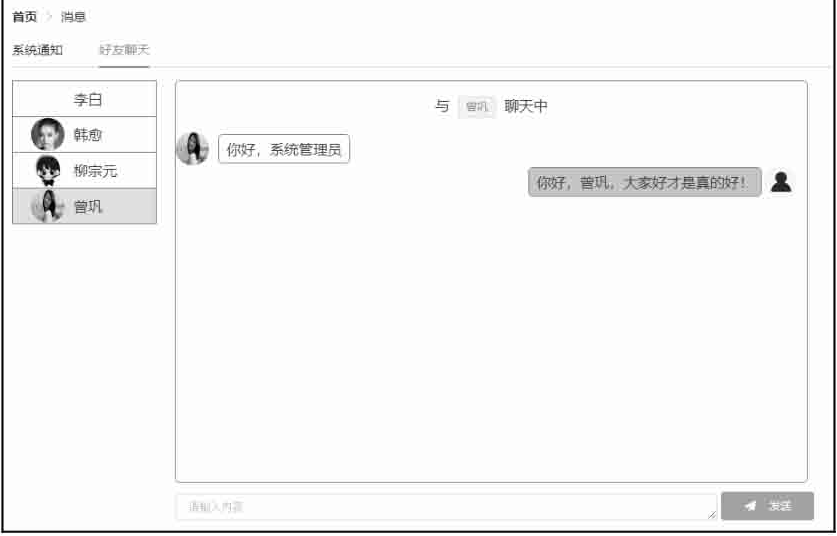
在线聊天项目
人事管理项目-在线聊天 后端接口实现前端实现 在线聊天是一个为了方便HR进行快速沟通提高工作效率而开发的功能,考虑到一个公司中的HR并不多,并发量不大,因此这里直接使用最基本的WebSocket来完成该功能。 后端接口实现 要使用WebSocket&…...

动态规划-硬币排成线
动态规划-硬币排成线 1 描述2 样例2.1 样例 1:2.2 样例 2:2.3 样例 3: 3 算法解题思路及实现3.1 算法解题分析3.1.1 确定状态3.1.2 转移方程3.1.3 初始条件和边界情况3.1.4 计算顺序 3.2 算法实现3.2.1 动态规划常规实现3.2.2 动态规划滚动数组 该题是lintcode的第394题&#x…...
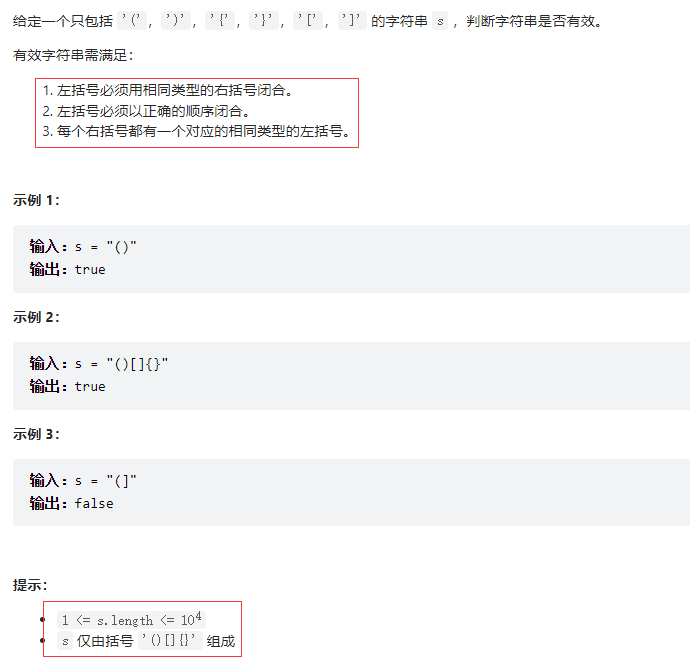
有效的括号——力扣20
题目描述 思路 1.判断括号的有效性可以使用「栈」这一数据结构来解决 2.遍历给定的字符串 s。当遇到一个左括号时,我们会期望在后续的遍历中,有一个相同类型的右括号将其闭合。由于后遇到的左括号要先闭合,因此我们可以将这个左括号放入栈顶。…...

【轻量级网络】华为诺亚:VanillaNet
文章目录 0. 前言1. 网络结构2. VanillaNet非线性表达能力增强策略2.1 深度训练2.2 扩展激活函数 3. 总结4. 参考 0. 前言 随着人工智能芯片的发展,神经网络推理速度的瓶颈不再是FLOPs或参数量,因为现代GPU可以很容易地进行计算能力较强的并行计算。相比…...
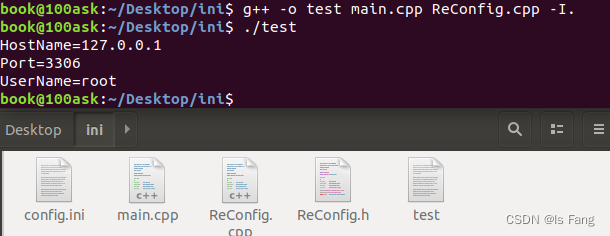
读写ini配置文件(C++)
文章目录 1、为什么要使用ini或者其它(例如xml,json)配置文件?2、ini文件基本介绍3、ini配置文件的格式4、C读写ini配置文件5、 代码示例6、 配置文件的解析库 文章转载于:https://blog.csdn.net/weixin_44517656/article/details/109014236 1、为什么要…...
Python对接亚马逊电商平台SP-API的一些概念理解准备
❝ 除了第三方服务商,其实亚马逊卖家本身也可以通过和SP-API的对接,利用程序来自动化亚马逊店铺销售运营管理中很多环节的工作,简单的应用比如可以利用SP-API的对接,实现亚马逊卖家后台各类报表的定期自动下载以及数据分析整理工…...

[Halcon3D] 主流的3D光学视觉方案及原理
📢博客主页:https://loewen.blog.csdn.net📢欢迎点赞 👍 收藏 ⭐留言 📝 如有错误敬请指正!📢本文由 丶布布原创,首发于 CSDN,转载注明出处🙉📢现…...

Go Web下gin框架使用(二)
〇、gin 路由 Gin是一个用于构建Web应用程序的Go语言框架,它具有简单、快速、灵活的特点。在Gin中,可以使用路由来定义URL和处理程序之间的映射关系。 r : gin.Default()// 访问 /index 这个路由// 获取信息r.GET("/index", func(c *gin.Con…...

算法笔记-线段树合并
线段树合并 前置知识:权值线段树、动态开点 将两棵线段树的信息合并成一棵线段树。 可以新建一颗线段树保存原来两颗线段树的信息,也可以将第二棵线段树维护的信息加到第一棵线段树上。 前者的空间复杂度较高,如果合并之前的线段树不会再用…...

Fiddler抓取IOS数据包实践教程
Fiddler是一个http协议调试代理工具,它能够记录并检查所有你的电脑和互联网之间的http通讯,设置断点,查看所有的“进出”Fiddler的数据(指cookie,html,js,css等文件)。 本章教程,主要介绍如何利用Fiddler抓取IOS数据包相关教程。 目录 一、打开Fiddler监听端口 二、配置网…...
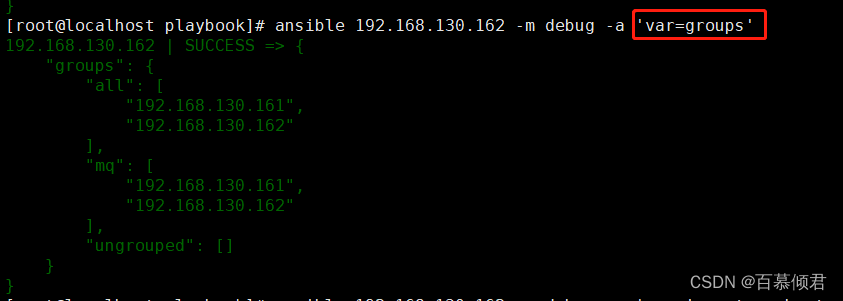
Ansible基础4——变量、机密、事实
文章目录 一、变量二、机密2.1 创建加密文件2.2 查看加密文件2.3 编辑加密文件内容2.4 加密现有文件2.5 解密文件2.6 更改加密密码 三、事实3.1 收集展示事实3.2 展示某个结果3.3 新旧事实命令3.4 关闭事实3.5 魔法变量 一、变量 常设置的变量: 要创建的用户要安装的…...

React实现Vue的watch监听属性
在 Vue 中可以简单地使用 watch 来监听数据的变化,还能获取到改变前的旧值,而在 React 中是没有 watch 的。 React中比较复杂,但是我们如果想在 React 中实现一个类似 Vue 的 watch 监听属性,也不是没有办法。 在React类组件中实…...
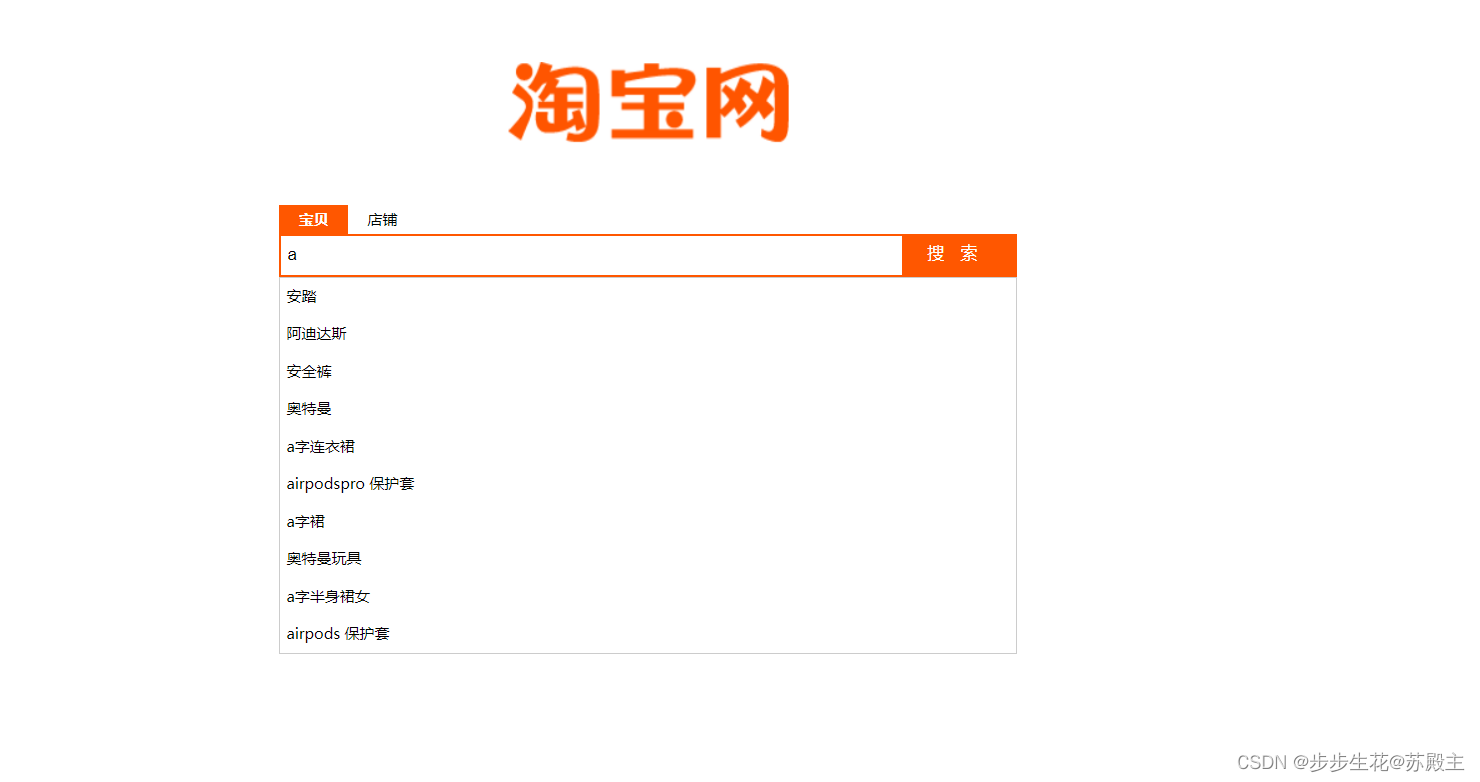
axios、跨域与JSONP、防抖和节流
文章目录 一、axios1、什么是axios2、axios发起GET请求3、axios发起POST请求4、直接使用axios发起请求 二、跨域与JSONP1、了解同源策略和跨域2、JSONP(1)实现一个简单的JSONP(2)JSONP的缺点(3)jQuery中的J…...

macOS Ventura 13.5beta2 (22G5038d)发布
系统介绍 黑果魏叔 6 月 1 日消息,苹果今日向 Mac 电脑用户推送了 macOS 13.5 开发者预览版 Beta 2 更新(内部版本号:22G5038d),本次更新距离上次发布隔了 12 天。 macOS Ventura 带来了台前调度、连续互通相机、Fac…...

jwt----介绍,原理
token:服务的生成的加密字符串,如果存在客户端浏览器上,就叫cookie -三部分:头,荷载,签名 -签发:登录成功,签发 -认证:认证类中认证 # jwt&…...
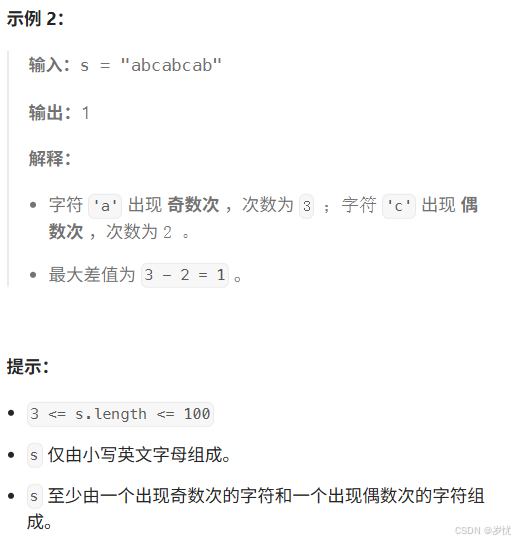
(LeetCode 每日一题) 3442. 奇偶频次间的最大差值 I (哈希、字符串)
题目:3442. 奇偶频次间的最大差值 I 思路 :哈希,时间复杂度0(n)。 用哈希表来记录每个字符串中字符的分布情况,哈希表这里用数组即可实现。 C版本: class Solution { public:int maxDifference(string s) {int a[26]…...
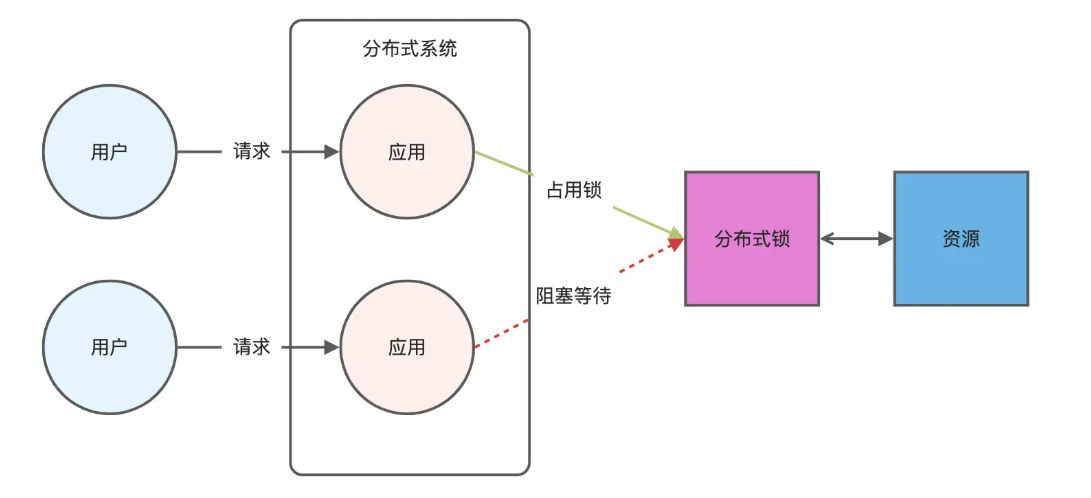
Redis相关知识总结(缓存雪崩,缓存穿透,缓存击穿,Redis实现分布式锁,如何保持数据库和缓存一致)
文章目录 1.什么是Redis?2.为什么要使用redis作为mysql的缓存?3.什么是缓存雪崩、缓存穿透、缓存击穿?3.1缓存雪崩3.1.1 大量缓存同时过期3.1.2 Redis宕机 3.2 缓存击穿3.3 缓存穿透3.4 总结 4. 数据库和缓存如何保持一致性5. Redis实现分布式…...

JVM垃圾回收机制全解析
Java虚拟机(JVM)中的垃圾收集器(Garbage Collector,简称GC)是用于自动管理内存的机制。它负责识别和清除不再被程序使用的对象,从而释放内存空间,避免内存泄漏和内存溢出等问题。垃圾收集器在Ja…...

转转集团旗下首家二手多品类循环仓店“超级转转”开业
6月9日,国内领先的循环经济企业转转集团旗下首家二手多品类循环仓店“超级转转”正式开业。 转转集团创始人兼CEO黄炜、转转循环时尚发起人朱珠、转转集团COO兼红布林CEO胡伟琨、王府井集团副总裁祝捷等出席了开业剪彩仪式。 据「TMT星球」了解,“超级…...

质量体系的重要
质量体系是为确保产品、服务或过程质量满足规定要求,由相互关联的要素构成的有机整体。其核心内容可归纳为以下五个方面: 🏛️ 一、组织架构与职责 质量体系明确组织内各部门、岗位的职责与权限,形成层级清晰的管理网络…...

将对透视变换后的图像使用Otsu进行阈值化,来分离黑色和白色像素。这句话中的Otsu是什么意思?
Otsu 是一种自动阈值化方法,用于将图像分割为前景和背景。它通过最小化图像的类内方差或等价地最大化类间方差来选择最佳阈值。这种方法特别适用于图像的二值化处理,能够自动确定一个阈值,将图像中的像素分为黑色和白色两类。 Otsu 方法的原…...

SpringTask-03.入门案例
一.入门案例 启动类: package com.sky;import lombok.extern.slf4j.Slf4j; import org.springframework.boot.SpringApplication; import org.springframework.boot.autoconfigure.SpringBootApplication; import org.springframework.cache.annotation.EnableCach…...

学习STC51单片机32(芯片为STC89C52RCRC)OLED显示屏2
每日一言 今天的每一份坚持,都是在为未来积攒底气。 案例:OLED显示一个A 这边观察到一个点,怎么雪花了就是都是乱七八糟的占满了屏幕。。 解释 : 如果代码里信号切换太快(比如 SDA 刚变,SCL 立刻变&#…...
-HIve数据分析)
大数据学习(132)-HIve数据分析
🍋🍋大数据学习🍋🍋 🔥系列专栏: 👑哲学语录: 用力所能及,改变世界。 💖如果觉得博主的文章还不错的话,请点赞👍收藏⭐️留言Ǵ…...
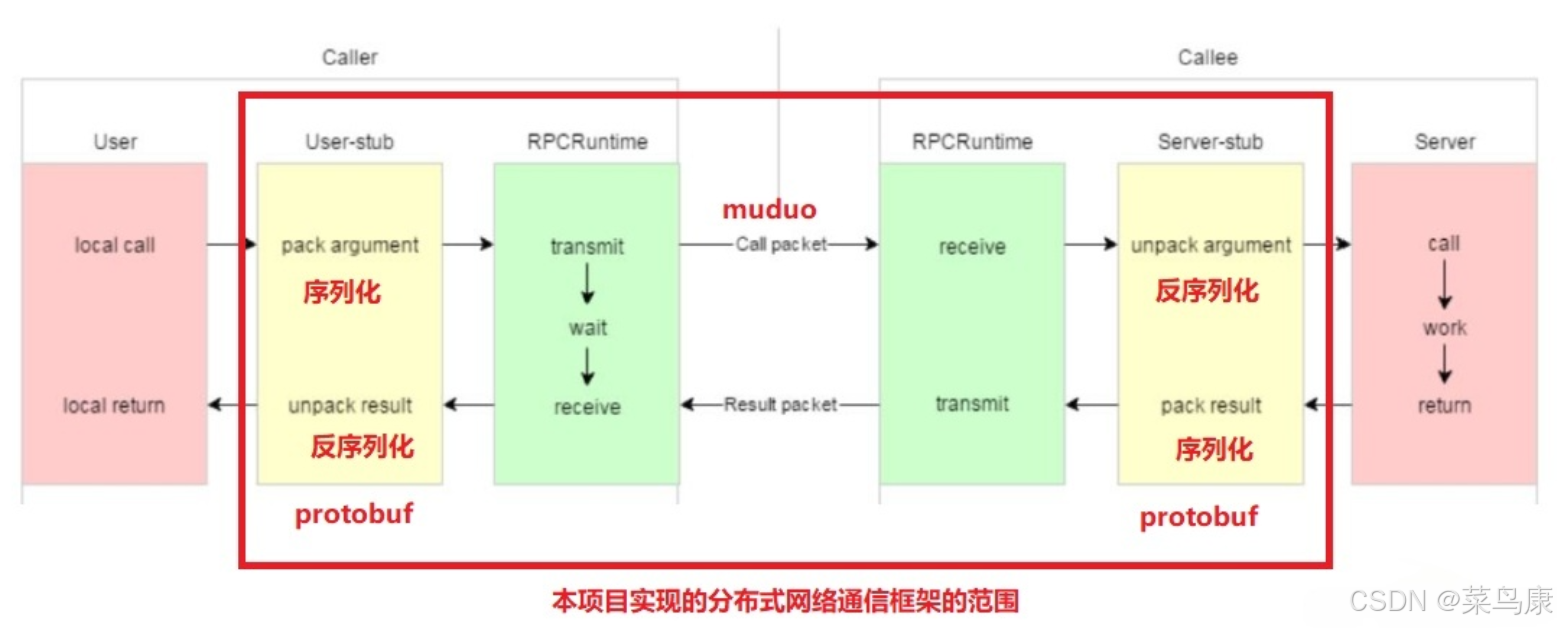
C++实现分布式网络通信框架RPC(2)——rpc发布端
有了上篇文章的项目的基本知识的了解,现在我们就开始构建项目。 目录 一、构建工程目录 二、本地服务发布成RPC服务 2.1理解RPC发布 2.2实现 三、Mprpc框架的基础类设计 3.1框架的初始化类 MprpcApplication 代码实现 3.2读取配置文件类 MprpcConfig 代码实现…...
